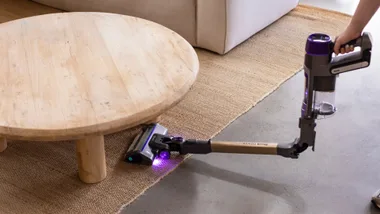Palms are tough. I once saw a photo of part of Hawaii after a tsunami had passed over it. Only the palms were still standing!
Most palms grow fast, too. Some accept any amount of tropical heat; others adore the cold. Some need water, and some accept years of drought. In other words, there’s a palm that’s just right for your garden! Even better, they don’t take up much space, so you can have a flower bed or even vegies around them.
Many palms are also great near swimming pools and house foundations. Their root systems are thin and fibrous and form big mats, so they’re unlikely to invade pools or pipes unless there’s already a leak. Most palms either shed their giant leaves every few months or so, or the dead ones hang there – in other words, they won’t clog up your pool with leaves in the first breeze, either.
Looking after palms:
Palms love a nice rich moist soil, but once you’ve got them growing well they’ll accept just about anything, except wet feet. Water your palms once a week for the first couple of years, keep them well mulched, and feed them either with compost of a good all purpose plant food. But after that, you can happily neglect them.
Which palm?
Palms can be tall, short, with one stem or a lovely clump, and they come with all sorts of leaf shapes, too. Some of my favourite palms are those with colored stems, or leaf bases. They can look quite stunning – especially if you plant a clump of six or more.
Colored Palms
Lipstick Palm
These have extraordinarily bright pink/red stems – possibly the most brilliantly colored palm in the world. But they do need a frost-free climate to survive and thrive.
Red Ted™ Teddybear Palm
If it’s too cold for lip stick palms, try Red Teds, or Glorious Dypsis leptocheilos. They too have bright red stems as well as glossy green leaves, but survive cold climates – and look stunning indoors in pots.
Chambeyronia macrocarpa var. hookeri
This is another ‘reddie’, this time with bright red new leaves. It needs a good hot climate.
Bismarkia nobilis
These have silver blue leaves, and are quite striking, especially in groups. They need full sun and don’t like frost.
Areca vestiara
This is another sub tropical palm, with bright orange leaf bases. The Golden Cane palm (Dypsis lutepsis ) is a clustering palm – it can grow about a dozen golden colored trunks, but doesn’t have a main trunk. It’s a great plant in the garden in frost-free climates, but in cooler places you can grow it in a big pot indoors.
Tough Palms
Foxtail Palm (Wodyetia bifurcata.)
This palm’s leaves look a bit like a fox’s tail – a pretty odd looking fox, anyhow. It’s native to North Queensland but you can grow it as far south as Melbourne, in the garden or in pots. It’s REALLY tough.
Rhapis excelsa
This is another good, tough clumping palm. It needs a frost-free garden, but also survives well indoors.
Alexander palm (Archontophoenix alexandrae)
You need a frost-free climate for this one, or a nice spot indoors. It likes semi shade too – useful in large gardens.
The Bangalow palm
(Archontophoenix cunninghamiana) This is tough, tough tough, and fast growing too. It’ll tolerate heat or light frosts.
Walking stick palm (Linospadix monostachya):
This is one of my favourites. It’s a slender, feathery palm. It likes semi-shade and moist soil, but ours has survived six years of drought and no watering. It produces vivid red berries too. It grows fast in hot climates, but tolerates really severe frost, though it will grow much more slowly when it’s cold and dry.
Fruiting Palms
Date Palms
Dates palms are supposed to be sub-tropical, but they’ll survive heavy frosts – they just won’t grow when it’s cold. But they do need heat and low humidity to fruit well. You also need a male and a female to get fruit. The leaves have big spines, too, so you may not want them in your backyard.
The Canary Island date palm (Phoenix canariensis).
This produces dates – just not very good ones! It takes cold, heat, drought and grows to 5metres high. It also has spines on its leaves.
Jelly palm (Butea capitata).
The jelly palm needs a frost-free climate, but will survive frosts in a sheltered garden. It’s fruit is the size of a small apple, but bright orange, sour – sweet and meaty, a bit like a weird kind of date. It’s fun to grow just to show off the fruit.











